Prøve GULL - Gratis
Era of Living materials
Scientific India
|March - April 2021
Hybrid materials combine bacterial cells with nonliving elements that can conduct electricity or emit light.

An artist's rendering of a bacterial cell engineered to produce amyloid nanofibers that incorporate particles such as quantum dots (red and green spheres) or gold nanoparticles.
Nature manufactures a Nmultitude of complex, hierarchical, multifunctional ‘living’ materials – including bone, wood, tissue, and organs. Advances in modern biotechnology over the past few decades have enabled scalable manufacturing of multiple ‘nonliving’ materials (e.g., chemicals, fuels, pharmaceuticals) produced by a variety of wildtype and engineered microorganisms. However, synthetic replication of hierarchical living materials largely eluded scientists and engineers until the advent of a new field-engineered living materials (ELMs). Scientists and engineers are always pursuing the goals to create a world of living materials that have the characteristics of biological systems: self-replication, self-regulation, self-healing, environmental responsiveness and self-sustainability. The fusion of synthetic biology with classical materials science has yielded breakthrough materials innovations and spawned a new biotechnology field. Engineered Living Materials (ELMs) are defined as engineered materials composed of living cells that form or assemble the material itself or modulate the functional performance of the material in some manner. The integration of functional synthetic materials and living biological entities has emerged as a new and powerful approach to create adaptive and functional structures with unprecedented performance and functional structures with unprecedented performance and functionalities. The proposed idea would push the boundaries and frontiers of synthetic biology, materials engineering, nanotechnology, biomaterials, artificial intelligence and directed evolution into new realms which can be summarized as:
Denne historien er fra March - April 2021-utgaven av Scientific India.
Abonner på Magzter GOLD for å få tilgang til tusenvis av kuraterte premiumhistorier og over 9000 magasiner og aviser.
Allerede abonnent? Logg på
FLERE HISTORIER FRA Scientific India
Scientific India
Japanese physicists were the first to measure the most tolerant entanglement state, the W state
There are many unusual things that happen in the world of quantum physics.
3 mins
September - October 2025
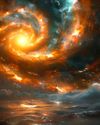
Scientific India
The Fifth Force: Could It Unlock the Secret of Dark Matter?
What if the universe is powered by a force we've never seen before? For centuries, science has explained nature with four fundamental forces.
3 mins
September - October 2025

Scientific India
A flu test you can chew
As flu season nears in the northern hemisphere, scientists are exploring a surprising new way to detect infection: through taste.
1 mins
September - October 2025
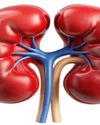
Scientific India
Lab-Grown Kidney Brings Artificial Organ Dream Closer to Reality
In a major leap toward bioengineered organ replacement, scientists have successfully grown human kidney 'assembloids' in the laboratory that mimic key structural and functional features of natural kidneys.
1 min
September - October 2025

Scientific India
Your pumpkin might be hiding a toxic secret
Pumpkins, squash, zucchini, and other members of the gourd family have a surprising trait: they can take up pollutants from the soil and store them in their edible parts.
1 mins
September - October 2025
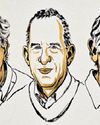
Scientific India
2025 Nobel Prize in Physics Reveals Quantum Secrets in Superconducting Circuits
The 2025 Nobel Prize in Physics has been awarded to John Clarke, Michel H. Devoret, and John M. Martinis for their pioneering experiments that brought quantum mechanics from the invisible atomic world to the macroscopic scale a system large enough to hold in your hand.
1 mins
September - October 2025
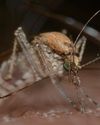
Scientific India
Genomic Evidence Redefines the Evolutionary Age of Mosquitoes
A new genetic analysis has shaken up what we thought we knew about one of humanity's most notorious pests the mosquito.
1 min
September - October 2025

Scientific India
Nobel Prize in Chemistry 2025: Building Molecular Architectures with Room to Breathe
In a scientific breakthrough that bridges molecular design with planetary-scale problems, the 2025 Nobel Prize in Chemistry has been awarded to Susumu Kitagawa, Richard Robson, and Omar Yaghi.
1 mins
September - October 2025
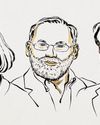
Scientific India
Guardians of Immunity: Nobel Prize 2025 Honors Discoveries that Keep the Immune System in Check
The 2025 Nobel Prize in Physiology or Medicine has been awarded to Mary E. Brunkow, Fred Ramsdell, and Shimon Sakaguchi for their groundbreaking discoveries in the field of peripheral immune tolerance a crucial mechanism that prevents the body's immune system from turning against itself.
1 mins
September - October 2025
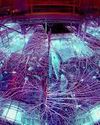
Scientific India
'Is cold nuclear fusion feasible?
In early May 1989, two chemists from the University of Utah, Pons and Fleischmann, arrived in Washington, U.S.A. The aim is to present their findings to members of the US Congress.
3 mins
September - October 2025
Translate
Change font size
